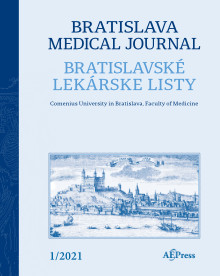Journal info
|
||||
Select Journal
Journals
Bratislava Medical Journal 2024 2023 2022 2021 2020 2019 2018 2017 2016 2015 2014 2013 2012 Ekologia - Ecology Endocrine Regulations General Physiology and Biophysics Neoplasma Acta Virologica Studia Psychologica Cardiology Letters Psychológia a patopsych. dieťaťa Kovove Materialy-Metallic Materials Slovenská hudba 2025Webshop Cart
Your Cart is currently empty.
Info: Your browser does not accept cookies. To put products into your cart and purchase them you need to enable cookies.
Bratislava Medical Journal Vol.124, No.9, p.707–717, 2023 |
||
| Title: Molecular mechanisms of antidiabetic effect of betulinic acid in lotus rhizome | ||
| Author: Damean De SILVA, Upul SENARATH, Pathirage Kamal PERERA | ||
| Abstract: OBJECTIVES: To explain the bio-physiological mechanisms of the antidiabetic effect of betulinic acid in Lotus rhizome. BACKGROUND: Even though Sri Lankan native medicine uses Lotus rhizome as a medicinal food for diabetes mellitus, its antidiabetic property has not been scientifically explained yet. It is found to compose several medicinally active components with antidiabetic properties, including Betulinic acid. METHODS: A narrator review was conducted with a literature search in PubMed and Google Scholar databases using the search terms “Nelumbo nucifera rhizome”, “Lotus rhizome”, “phytochemicals”, “antidiabetic effect”, “hypoglycaemic effect” “Betulinic acid”, and “molecular mechanism”. RESULTS: The triterpenoid, Betulinic acid exerts its antidiabetic effect via seven bio-physiological mechanisms including, inhibiting α-glucosidase and α-amylase, upregulating the expression of peroxisome proliferator-activated receptor gamma coactivator-1 α, enhancing AS160 protein phosphorylation, stimulating adenosine monophosphate-activated protein kinase activation, stimulating Glucose transporter type 4 synthesis and translocation, inhibiting Protein Tyrosine Phosphatase 1 B activity preventing dephosphorylation of insulin receptor and stimulating Takeda-G-protein-receptor-5 resulting in an increased release of insulin from insulin-containing granules CONCLUSION: The available scientific knowledge explains that betulinic acid in Lotus rhizome can improve glucose homeostasis contributing to the antidiabetic effect of this root (Tab. 1, Fig. 6, Ref. 29). |
||
| Keywords: glucose homeostasis, hypoglycemic effect, bioactive compounds, phytochemical, medicinal food, functional food | ||
| Published online: 04-Jul-2023 | ||
| Year: 2023, Volume: 124, Issue: 9 | Page From: 707, Page To: 717 | |
| doi:10.4149/BLL_2023_108 |
||
|
|
 download file download file |
|

